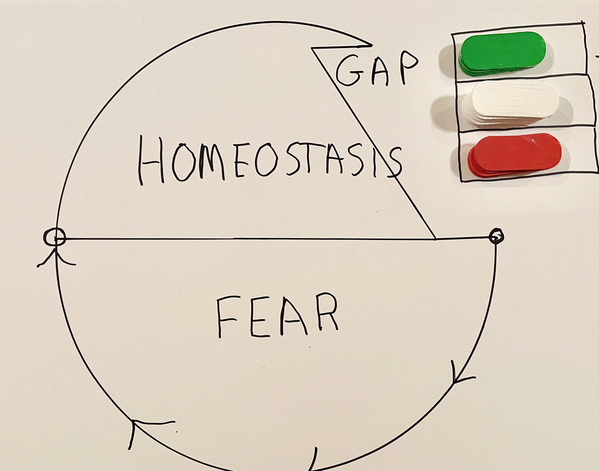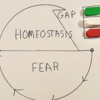I would like to examine this statement from Audrey Stillerman on response to Dr. Gordon’s comment on academic narrowmindedness posted 10/23/2022. Please accept this as a means of expanding discussion and not solely criticism. I am interested in opposing viewpoints.
“Along with other experts, the authors are concerned that ACE scores may be misappropriated as a screening or diagnostic tool to infer individual client risk and misapplied in treatment algorithms that inappropriately assign population level risk for health outcomes from epidemiologic studies to individuals. Such assumptions ignore the limitations of the ACE score. Routine ACE screening may also retraumatize individual patients and clients who are not yet ready to disclose their personal histories of adversity. Therefore, programs that promote ACE screening and treatment of individuals with high scores should receive the same rigorous and systematic review of the evidence of their effectiveness according to the standards applied to other screening programs by the U.S. Preventive Services Task Force (USPSTF).”
I have not been convinced that individuals are always aware of what happened to them as children. We live without a cultural construct nor language to express it until later in life. First memories seem to start accumulating about five years of age, and in some individuals, some memories are blocked through a process of childhood autobiographical memory disturbance. Just like asking for a patient history may not reveal valuable information, screening for ACEs may leave substantial gaps while the real evidence of childhood acquired trauma (CAT) can be found by examining individual response to CAT.
After reading a story about a young man in Juneau, AK, who killed the daughter of his girlfriend, I had two thoughts. Some of his behaviors were evident. He was using drugs when the death occurred, and according to the article I read he was expressing anger at the child for disturbing him. I then looked on Alaska’s Courtview for his parental history and saw that his father had a criminal history that showed alcohol abuse and domestic violence, as well as possible absence from the young man’s life. It explained the possibility of significant CAT in the young man. From that record, I saw that certain types of behaviors might actually provide a sense of what someone’s exposure to ACE’s might be.
A second step was for me to accept a three-tier expression of levels of stress adopted by the American Academy of Pediatrics: normal, tolerable and toxic stress. A three-tier level tells me that we should focus on identifying toxic stress as the place to start diagnosis, and that toxic stress levels can start being expressed with as few as 4 ACEs.
The next step was a more difficult one for me to make. Why did so many of my colleagues who admitted to as many as all 10 ACEs from the original study have such high achievement levels. They qualify as toxically stressed and the literature on resilience would argue that they achieved because of resilience. I took a different approach. When looking at PAR levels (population attributable risk) in the ACE Study, it appeared to me that the negative behaviors being discussed was actually a menu of behaviors, and PAR only meant that not everyone adopted all of the negative behaviors as their coping mechanism. Dr. (Vincent) Felitti (co-principle investigator of the CDC-Kaiser Permanente Adverse Childhood Experiences Study) writes about someone’s addiction perhaps being their personal attempt at self-healing. By identifying a range of negative behaviors in a graded dose responsive curve that never reaches 100%, it appears that individuals adopt multiple self-healing behaviors. If so, how, and why? I saw multiple behaviors as “stacks.” Common stacks include smoking, drinking and drug abuse, anger, and depression. If the stack gets high enough, the constant stress contributes to a variety of future medical conditions. Because a stack is often visible or discoverable, just as I was able to find information on the young man and his father in the public record, might this be a better way to identify toxically stress individuals.
The final step I took was to ask if only negative behaviors were on the menu. When watching interviews with ACE subjects, two observations of one interview puzzled me. The panel were successful and predominantly white and well educated. They had medical insurance which meant jobs. Could positively adopted behaviors be a part of the stack? My theory is based on a fear response loop that, for normal stress, activates, ends, and returns to baseline, or homeostasis. Tolerably and in particular toxically stressed individuals may not be able to return to homeostasis, which means constant activation and a steady stream of cortisol entering the body. If behaviors help alleviate the feeling of stress, it interrupts the stress response in some way that feels like relief. That relief wears off and needs restimulation to repeat the relief. For people who are viewed as successful, could self-healing behaviors include some viewed as neutral or positive. If so, then an individual's stack might have more available self-healing behaviors. Identification of positive and neutral behaviors might reveal a higher level of toxic stress than just assessment of negative behaviors. If the menu is expanded, then a PAR should exist for positive and neutral behaviors.
I view the stress response as a simple system. Toxically stressed individuals just activate a fear response more frequently and return to homeostasis is difficult, if not impossible, which leads to a stacking of positive, neutral and negative behaviors in a structured way—what is available that the brain responds to by providing a short-term alleviation of stress feelings. If we find evidence of individual use of these behaviors, the stack, we can then identify an individual at the level of toxic stress and begin a healing process (a different discussion).
So back to the quoted statement: the likelihood of an ACE assessment being inaccurate is, in my view, highly likely. The subject may not accurately recall individual ACEs, and as the principal investigators for the study acknowledge, there are more parental behaviors that could have been included in the study. And if a three-tier assessment produces the information we need, is it productive to nuance the results more than this.
If the risk identified by a three-tier system reflects adoption of a variety of stacked behaviors by individuals from a menu, the PAR only expresses that a choice made by the brain, most likely on access to the behavior. The root cause for the behaviors is an enhanced fear response and disruption of homeostasis by increased activation. There is no real limitation of the ACE score in this model. In a systems approach, we can identify toxically stressed individuals through a behavioral algorithm that includes assessing a stack of positive, neutral and negative behaviors. We gain valuable information this way. The next step is what to do with this information?
The attached photo is a game concept that shows the gap I write about, along with red (negative behaviors), white (neutral behaviors) and green (positive behaviors) to use for identifying an individual stack used to fill the gap caused by toxic stress (for returning to homeostasis).





Comments (1)